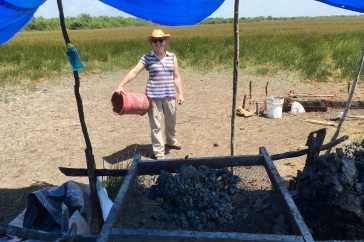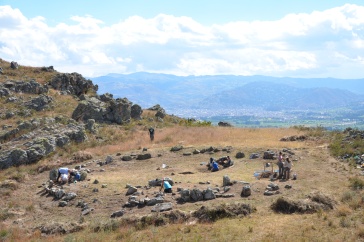
Kei Saito is a sociology graduate student and winner of a competitive UNH dissertation year fellowship.
Since state and federal lawmakers began introducing legislation in the 1990s targeting sex offenders, years of scholarly work have outlined the negative influences and collateral damage such laws have had, sociology graduate student Kei Saito says.
Though well-intentioned, the laws have done little to achieve the intended effect of making children safer, according to Saito.
And now, those laws are increasingly being used to punish juveniles who are convicted of sexual offenses. But many times, the punishments — in some cases, a lifetime on sex-offender registries, residency restrictions and costly court-mandated treatments — far outweigh the alleged crime. A large number of juvenile cases involve teenagers in relationships who’ve run afoul of state age-of-consent laws. A teen couple who send each other explicit pictures of themselves on their smartphones could wind up on registries for life.
“There are nuances that are often missing from adult sex-offense cases,” Saito says.
For Saito and other parties involved in the juvenile justice system, there are too many unanswered questions about adding juveniles to offender registries. Registration requirements, residency restrictions and community notification provisions might not be the best way to prevent future crimes, help rehabilitate offenders or provide victims with justice.
Saito, the recent recipient of a UNH dissertation year fellowship, aims to answer some of those questions with her research, which she hopes will help inform both policymakers and future researchers.

“I’ve always been concerned about child welfare and child advocacy — it’s why I came to UNH, to study with people like my advisor David Finkelhor, and to see if policies like this actually make kids safer,” Saito says.
According to Saito, current research on placing juvenile offenders on registries faces two major shortcomings. The first, she says, is that, for the most part, the research has focused on juveniles who’ve already been convicted of crimes and are on the registries. The federal Adam Walsh Child Protection and Safety Act of 2006 divides sex offenders into three tiers. People as young as 14 years of age can be placed on the national sex offender registry if they are classified as Tier 3 offenders — the most serious level — or if they were tried as adults. State-level registry laws vary, with a majority of states not defining a legal minimum age for registering juveniles — some states can and have placed youths under age 14 on their registries.
“When you look at the research on the juvenile justice system, for the kids who end up being adjudicated, things like social class and race appear to play a part in where they ultimately end up in the process. When we focus all of our attention on kids who are already on the registries … we’re missing some of the kids who were filtered out by the juvenile justice system who may have also committed the same sort of crimes,” Saito says.
The second shortcoming: a dearth of input from law enforcement, juvenile justice workers and other professionals on the ultimate efficacy of placing juveniles on registries.
“Based on other research scholars have done, we have fairly consistent evidence that people on the ground don’t think registering juveniles is helpful in terms of public safety concerns. But we don’t have a good understanding of why they think so.” she says. “That’s why we have to talk to people directly and conduct qualitative research.”
Saito’s research approach is twofold. She plans on interviewing juvenile justice professionals in order to glean insights on how enforcing registry laws affects their opinions about the regulations. Along with the interviews, Saito is examining quantitative data from Florida’s state juvenile justice department.
According to Saito, Florida collects more data than any other state on juveniles who enter the justice system. Florida requires all juveniles referred to the department to fill out a “risk assessment tool,” which assesses whether they are at risk of committing another crime. The form includes questions on common sociological data — how the child is doing in school and so on — that’s often absent from court records. Such data can eventually help in showing why some juveniles are placed on registries and others aren’t.
Ultimately, Saito hopes the combination of state-level data and on-the-ground perspectives from professionals will help contribute to a more nuanced discussion about applying sex offender registry laws to juveniles — and that a more nuanced discussion will help lawmakers create better policies and allocate resources that help victims and offenders.
“If we’re wasting money on policies that just don’t seem to work, that’s more money we could be directing to victim services,” she says. “If we have the money to punish someone, then I think we have the same money to help someone as well.”
-
Written By:
Larry Clow '12G | UNH Cooperative Extension

















































